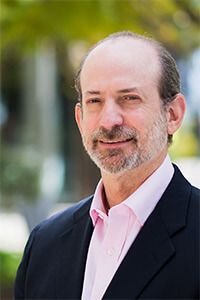Positive Preliminary Results in Highly Personalized Deep-Brain Stimulation Therapy for Treatment-Resistant Depression
Positive Preliminary Results in Highly Personalized Deep-Brain Stimulation Therapy for Treatment-Resistant Depression

A research team led in part by two BBRF grantees has reported initial success in using a novel, highly personalized, and technologically advanced treatment approach to relieve symptoms in a single patient with lifelong and severe treatment-resistant depression.
As reported in The New York Times, the patient who received the new treatment had not been helped by some 20 different combinations of medicines or by electroconvulsive therapy (ECT) or non-invasive transcranial magnetic stimulation (TMS). "Within a few weeks" of the beginning of her new treatment, she told the Times, "the suicidal thoughts just disappeared. Then it was a gradual process where it was like my lens of the world changed. The device has kept my depression at bay, allowing me to return to my best self and rebuild a life worth living."
The research team used a form of brain stimulation called closed-loop neuromodulation, in which prior extensive mapping of the patient's neural circuitry preceded the implantation, via invasive brain surgery, of a battery-powered deep-brain stimulation (DBS) device. The device was specifically "tuned" to activate briefly (in 6-second bursts) throughout each day in response to signals within the brain which had been linked with the onset of this patient's depressed moods.
Senior members of the team were Andrew D. Krystal, M.D., and Edward F. Chang, M.D., of the University of California, San Francisco. Dr. Krystal, a 1997 and 1993 BBRF Young Investigator, is an expert on mood disorders and neuromodulation therapy. Dr. Chang is a neurosurgeon with extensive experience in using implantable neuromodulation devices to treat patients with epilepsy, an FDA-approved procedure. First author on the paper in Nature Medicine that reported the results was Katherine W. Scangos, M.D., Ph.D., whose 2018 BBRF Young Investigator grant has been devoted to testing the novel treatment idea.
The therapeutic results just reported were foreshadowed in an important paper by Drs. Krystal, Chang, and Scangos appearing in the same journal this past January. That paper demonstrated the team's ability to deliver deep-brain stimulation to the same patient and while doing so, to correlate stimulation in highly specific brain areas with the patient's emotional state. "We found an elaborate repertoire of distinctive emotional responses that were rapid in onset, reproducible, and context- and state- dependent," the researchers noted. By "state dependent," they mean that simulation in given spots could generate different responses in the patient, which depended in a predictable way on the mood- state of the patient at the time of stimulation.
The new paper builds on the prior paper's construction of what might be likened to a highly detailed catalog of the correlations between stimulation in specific brain areas and how they were experienced, in emotional terms, by one specific patient with refractory depression. Taking the concept a crucial step further, after repeating and verifying these earlier results, the team now crunched the data and determined that in this particular patient, certain brainwave fluctuations in the amygdala (in the "gamma band," one of several wavelengths reflecting neural activity) provided a reliable signal to trigger the delivery of short bursts of neurostimulation via the implanted DBS device. While the biomarker "signal" in this patient is detected in the amygdala, the therapeutic stimulation is delivered via electrodes carefully positioned in a different brain area called the ventral striatum.
The idea behind the strategy, captured by the technical phrase "closed-loop stimulation," is that it might be uniquely effective to deliver brain stimulation selectively during the course of each day, rather than continuously, as prior DBS tests had done. This transitory stimulation would be in direct response to signals indicating the patient was entering a brain-wave state that frequently accompanies the onset of depressed mood.
The objective is to lessen or prevent depression symptoms associated with the presence of the biomarker signal. The stimulation used by the UCSF team was gentle enough so as not to be detectable by the patient, was limited each day to a maximum of 300 6-second bursts, and was not delivered at night so as not to disturb the patient's sleep.
As reported by the team, "implementation of closed-loop therapy rapidly improved both symptom severity and [overall] depression," as measured on a standard diagnostic scale. On that scale, the patient's score, which was 33 at the outset, dropped to 14 after 12 days of the start of the stimulation therapy, and dropped below 10—a level signifying "remission"—after several months of the beginning of the therapy.
More details and a discussion of the implications for this new research will be the focus of a feature story in the next issue of BBRF's Brain & Behavior Magazine. That story will seek to explain who this form of therapy might eventually benefit, and when, as well as its possible implications for targeting non-invasive brain stimulation for other psychiatric disorders.




